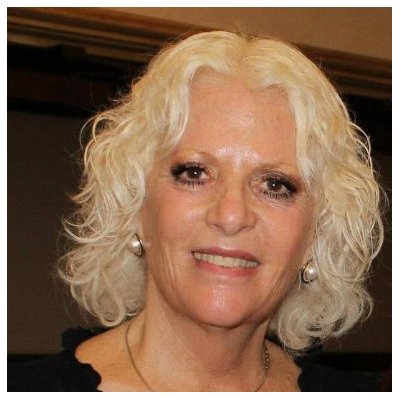
Sell to prospects who WILL buy (Instead of those who 'should' buy)
Your solution is great. You know the narrative of the type of buyers who buy. You’re writing appropriate content and getting it out to the right demographic. But you’re still closing less than 5% from first contact and spending a ton of resource finding different ways to touch the same people as your competition touches – in hopes that you’ll have the right message that catches them at the right time, or just grind them down.
Why aren’t more buyers buying? Do you know why your well-executed sales outreach programs – salesperson, social media, digital media, marketing - don’t elicit more closed sales?
Do you want to sell? Or have someone buy?
You’re not closing more because you’re messages target a restricted audience, those who have already:
- tried all familiar resources and workarounds to fix their own problem and came up short,
- decided their only route to a problem resolution is to make a purchase,
- gotten appropriate buy-in and managed any disruption that a purchase would bring
and then you and your competitors work tirelessly to grab from that small pool of ready buyers. By first seeking those you believe are probable buyers (those who SHOULD buy) you limit your spectrum of buyers to those at the end of their decision path (beginning at step 10 of 13 steps. See steps below) and WHO HAVE concluded they not only need to buy something, but are prepared for any change a purchase will cause.
We forget that a buying decision is first a change management issue before it's a solution choice issue. (Indeed, the last thing buyers want is to buy anything. Literally: the last thing.) By acting as if selling causes buying, we disregard the internal, private, idiosyncratic, systemic change management work buyers must do before they’ve got their ducks in a row and are ready; until then, they can’t buy regardless of their need or the efficacy of your solution.
The sales model only handles the solution choice/buying portion of the complete Buying Decision Path targeting those you believe have a probable ‘need’ - the low hanging fruit – and have completed their journey to Buyer Readiness. But this is merely a fraction of those who will eventually buy.
Why your prospects aren't buying
Here are the problems you face when targeting probably buyers who don’t yet have all their ducks in a row:
- Once prospects have determined a need, you’re already in a competitive situation and have to find ways to be better/cheaper/more branded.
- You’re wasting over 90% of your time finding, following up, meeting with, and in several ways trying to connect with, those who appear to need your solution but turn out not to be buyers.
- You ignore the high percentage of those who would/will buy but aren’t yet ready to (but could easily be gotten ready).
- You overlook the possibility of connecting with, and serving, real buyers early along their change management/decision path
- and reduces the number of possible entry points onto the Buying Decision Team/buying decision.
Sure, you’re making great information available for those who know what to look for and are ready to engage. But by adding a new component, you could be entering earlier and facilitating the full range of steps along the buying decision process - those that are not accessible with the sales model. The problem has never been your terrific solution but in closing all the sales you deserve to close. It’s because sales is solution-placement driven, seeking optimal ways to get to probable buyers but ignores the much higher pool of real prospects who aren’t far enough down their buyer’s journey to commit or engage.
Selling doesn’t cause buying
As a solution placement model, the sales model is great for when buyers have completed their internal steps and have gotten the appropriate buy-in for change. But for those buyers who haven’t completed their buy-in and change issues, and haven't yet determined if they CAN buy, sales doesn’t have the intent, skills, or focus. Sales wasn’t created to do that. It's only meant to place solutions. And it's possible for us to add a first step to sales and help people do their internal change work so they become buyers.
The foundation for the sales model as we know it was developed by Dale Carnegie, introduced in his book How to Win Friends and Influence People (1937). He set the stage for us to use sales to place our solutions by promoted relationships, face-to-face visits, finding folks with a need, and developing great pitches. Think about it: while there are certainly a helluva lot more bells and whistles in 2020, the basic skeleton of need/relationship/appointment/pitch, remains the same. It shouldn’t be. The buying environment has changed dramatically over the past 100 or so years, far more complex than merely choosing a vendor or solution; the sales model hasn’t. It’s time for new thinking. Let’s join buyers where they really have their real ‘pain’ and facilitate Buyer Readiness earlier in their buy-in/systemic change process.
If prospective buyers might need a new CRM system, for example, they cannot buy until their tech guys, users, time frames, vendor relationships, current software etc. are in agreement, recognize they can’t fix their problem themselves, and have assembled everyone who will touch the final solution to integrate the ‘new’.
It’s not merely about the need
Making a purchase means change and until all ‘givens’ are known and handled, the cost of a purchase is too high and they’ll maintain their status quo. And the time it takes them to manage all this is the length of the sales cycle. Having some good conversations with your sales guy, reading some good articles, and liking/needing your solution are necessary later, once they’ve finished their Pre-Sales change work.
Buyers don’t want to buy anything. They just want to resolve a problem with the least disruption and the most efficient use of resources. And until they figure out that they cannot resolve their problems themselves, and everyone has agreed to bring in something mew, and they know how to avoid any disruption that something new invariably brings with it, they cannot buy. Indeed, they're not even buyers until everyone agrees (hence the reason they don't heed our content outreach.)
All prospects/buyers must do this anyway, with you or without you. It might as well be with you. Why not use your industry knowledge to help them figure out how to traverse their steps efficiently? With a different hat on and a new skill set, you can facilitate them quickly through their process and be right there with them as they decide. You want to seek/find those exact ones who CAN/WILL buy. And you can find them on the first call. You'll just need a different hat on.
Steps in the buying decision path
To design messaging to find buyers earlier in their Buying Decision Path, recognize the steps buyers take to be ready and able to purchase:
1. Idea stage: Is there a problem?
a. Does it need to be solved? When? How?
b. What's the fallout?
c. Is the cost of a fix lower than the cost of the status quo?
d. Who needs to be involved?
2. Brainstorming stage: Idea discussed with colleagues.
3. Initial discussion stage: Colleagues discuss the problem, posit who to include on Buying Decision Team, consider possible fixes and fallout. Action groups formed. Research begins. New team members invited.
4. Contemplation stage: Group discusses:
a. Known resources to fix the problem (workarounds) and acceptable/fallout from each;
b. People who would need to buy-in.
5. Organization stage: Group collects all internal issues that need consideration, including finding more folks to invite into the process; research into the elements of the status quo; fallout to change. Begin to assess the entire scope of problem, resolution possibilities, cost of change/no change.
6. Change management stage: Group to determine:
a. Types of research necessary (and who will do it),
b. If all appropriate people are involved (and who else to invite),
c. A review of all elements of the problem and solution options,
d. How much disruption and change management would be required,
e. The pros/cons/possibilities of external solutions vs current vendor vs workaround.
7. Coordination stage:
a. Review needs, ideas, issues of new members invited aboard and how their voices affect choices, goals, and implementation problems;
b. Incorporate change considerations;
c. Delineate everyone’s thoughts re goals and change capacity;
d. Appropriate research responsibilities.
8. Research stage: Specific research for each possible solution; seek answers to how fallout and change would need to be managed with each solution.
9. Consensus stage: Buying Decision Team meets to share research consider their givens: downsides per type of solution, possibilities, outcomes, problems, management considerations, changes in policy, job description changes, HR issues, etc. General decisions made. Buy-in and consensus necessary.
10. Action stage: Responsibilities apportioned to manage the specifics of Stage 9. Calls made to several vendors for interviews and data gathering.
11. Second brainstorming stage: Discussion on results of data gathering, calls with vendors and partners, and fallout/benefits of each. Favored vendors pitched by team members.
12. Choice stage: New solution agreed on. Change management issues delineated and put in place. Leadership initiatives prepared to avoid disruption.
13. Implementation stage: Vendor contacted. Purchase made. Everything put in place.
A need isn't enough
Instead of only targeting probable buyers and ignoring the much larger pool of real buyers who are merely too early in their decision process to consider buying anything (but will, once they get to that point in their process), add a new focus: seek out folks who want to change, and facilitate them through to becoming buyers. Note: your current messaging is the wrong tool for this part of their process because it’s not information, need, or buying solution, or sales driven. You need a new skill to facilitate change.
To manage this Pre-Sales work, and as an adjunct to the sales model, I’ve developed Buying Facilitation® to
- work with sales to enter the Buying Decision Path between Steps 1-9 above (Pre-Sales),
- seek/find those who CAN buy (recognized a problem in the area your solution serves, but aren’t set up to buy anything yet),
- find the large pool of real buyers who can be facilitated efficiently through to Buyer Readiness,
- collapse the time from problem recognition to discovery of need to purchase,
- enable sellers to be servant leaders and real consultants, and be part of the Buying Decision Team when buyers get to the point they’re ready to buy.
Buying Facilitation® is a generic change management, decision facilitation model that can help buyers traverse that part of their journey that sales doesn’t handle. Using unique skill sets not involved in sales (Facilitative Questions, Listening for Systems, change sequencing) it was designed to optimize the change/decision process. By adding some new messaging and Buyer Persona targets, you can find those who aren’t touched by your sales messages but are in the process of becoming buyers.
By targeting those who CAN/WILL and are currently in their change stages rather than those who might have a ‘need’, by understanding the Pre-Sales (change management) steps all buyers take, by changing your messaging to address their internal resistance areas, disparate voices, and needs, you can find and facilitate the Pre-Sales decision path of those who CAN/WILL buy and enable them to ready themselves for a purchase.
Using Buying Facilitation® outcomes are quite different. It begins by entering as a true consultant, seeking folks who seek change in the area of the seller's solution. The conventional 'need' and 'solution placement' mind set not only misses those who are en route to becoming buyers and don't (yet) have interest in content, but has the potential of alienating folks not already seeking to buy. Not to mention it's a huge time waster. Using Buying Facilitation® as a preliminary skill set,
- Sellers can tell who will be a buyer on the first call and only visit people once they're buyers - a highly shortened process as the Facilitator makes the decision process much more efficient (half the time);
- Appointments are made only when representatives of the entire Decision Team are onboard [And note: this can take just one or two calls.];
- By entering at the beginning of the Decision Path instead of trying to enlist the low hanging fruit who've already become buyers, it's possible to close 8x more sales as per 35 years of control group/pilot testing;
- A seller's first job is to facilitate the Pre-Sales steps, then add the solution placement component when they're ready.
It sounds impossible if compared with the sales process of prospecting, qualifying, and pitching. But the entire process is different. With the focus on first facilitating the complete Decision Path from beginning to end (focus on change, not on selling), Buying Facilitation® expands the possible target audience by a factor of 8. It's a true Relationship Management tool, and saves time as sellers only sell to those who WILL buy.
Once people know all - all - of the elements (most are hidden, personal, and idiosyncratic) of their Pre-Sales decision/change steps and have realized they cannot resolve a problem without outside help, they are buyers and seek a solution. By this time, they've gone through their steps and are have recognized that bringing something new in will 'cost' less than maintaining the status quo. Design messaging to help them traverse their steps (Note: offering information about your solution until this occurs is irrelevant) to manage change and consensus – and THEN sell. We wait while they do this anyway and run after the ones who have completed this journey. Why not add a new criteria and skill set to what you’re already doing and expand your focus to find those who WILL buy.

By Sharon-Drew Morgen
Sharon-Drew Morgen is an original thinker, inventor of Buying Facilitation®, Facilitative Questions, 13 steps of systemic change, and the HOW of change. Author of the award-winning blog sharon-drew.com and 9 books including the New York Times Business Bestseller Selling with Integrity, Dirty Little Secrets: why buyers can’t buy and sellers can’t sell and WHAT? Did you really say what I think I heard? Sharon-Drew trains, coaches, speaks in several industries, including sales, healthcare, communication, change, Servant Leadership. She lives on a houseboat in Portland, Oregon, USA.
Find out more about Sharon-Drew Morgen on LinkedIn







